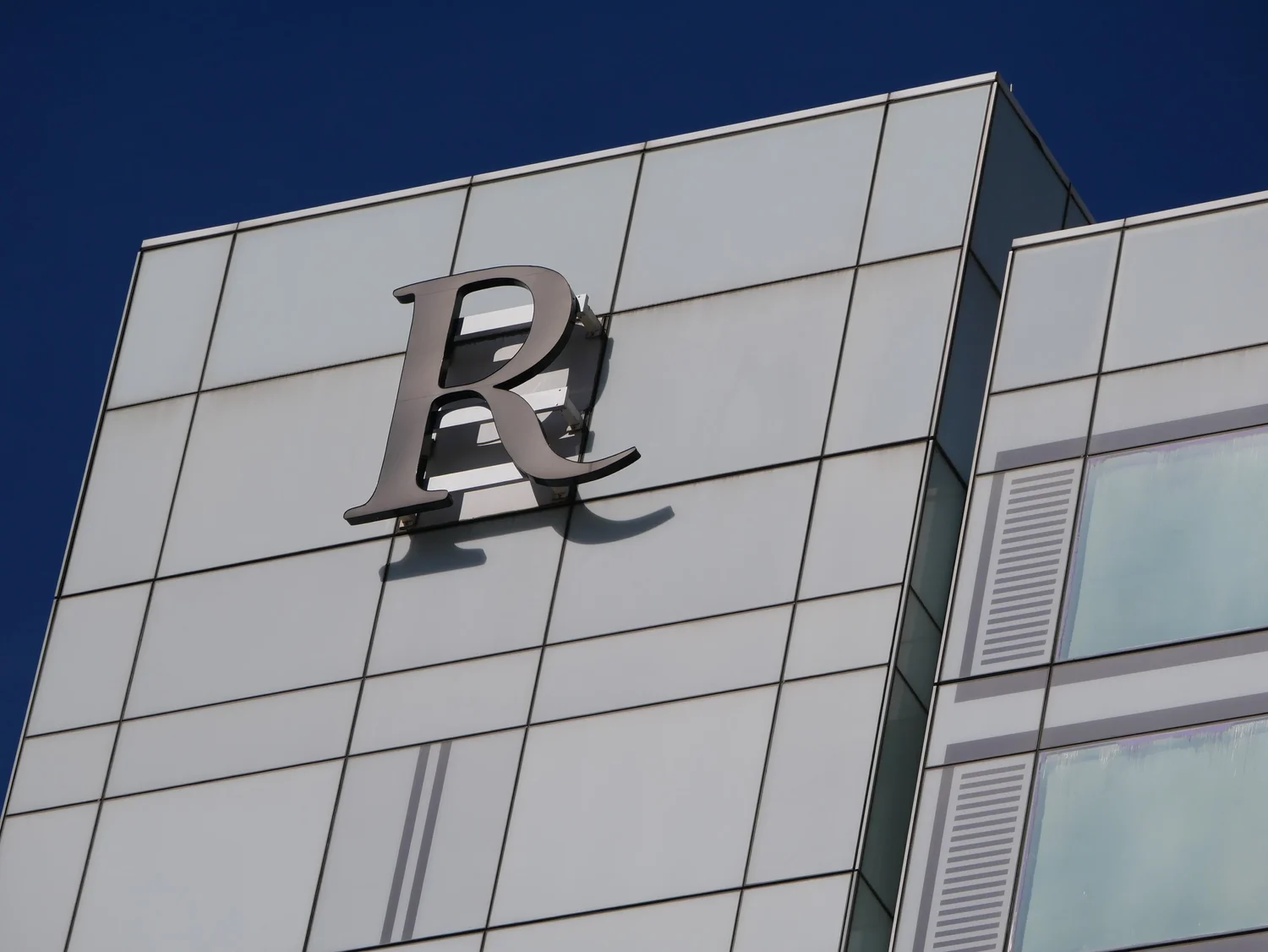
Prices listed are in US$.
Chicago, 14-16 April, 2023—Welcome to Chicagoland! Welcome to AXPONA 2023!
The last AXPONA I attended was five years ago. Much has since changed. The good news is that AXPONA was bustling this year after its pandemic-driven hiatus. Visitors from around the world made the trek to the largest audio show in North America. And it didn’t disappoint.
Exhibitors filled the hallways of each of the 12 floors of the show’s venue, the Schaumburg Renaissance Hotel and Convention Center. In all, I counted 366 exhibitors, in conventional rooms but also in larger spaces in the lobby area, ballrooms, and conference rooms in both the hotel and convention center. That’s more than twice the number of exhibitors at the Florida International Audio Expo I attended this year. And many of the exhibits were not explicitly described in the show’s program. Brands such as Borreson, Bowers & Wilkins, Chord, Cyrus, Perlisten, Pro-ject, Q Acoustics, Sonus Faber and Clearaudio were there under the auspices of their respective distributor / dealer network. The expo also featured a spatious Ear Gear Experience room for headphone auditioning and a marketplace area in the Expo Hall where one could buy records, CDs, and all sorts of audio gear and accessories.
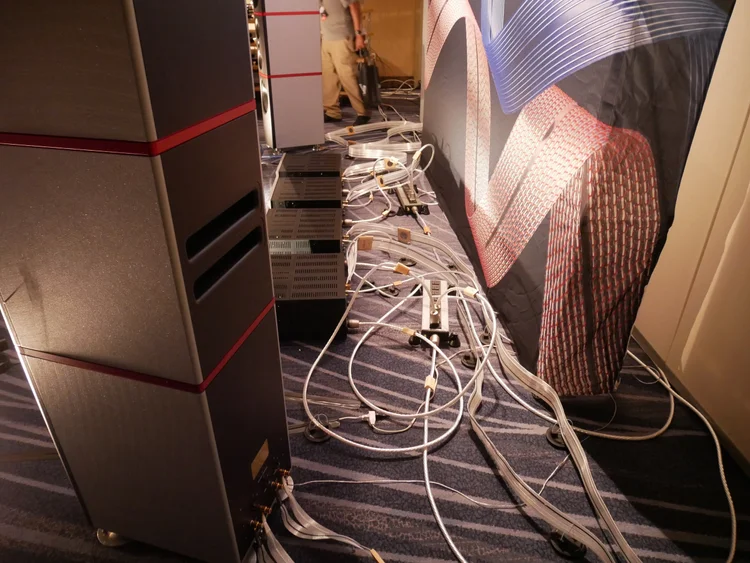
Also in the Expo Hall, in the Master Class area, were a series of scheduled presentations, where audio experts shared their expertise with seated visitors about everything from streaming, to how reviewers review, to cable interface technology. I attended a few of these, which I’ll summarize in the second part of my coverage.
The significant size and importance of AXPONA makes it a great place for manufacturers around the world to launch new products, and quite a few new releases were on display. I’ll try to tantalize you by showing a cross section of them, but as with any show this big, the question became, ‘Where to start’?
I suggest not starting where I did, which, on day 1, was with the large first floor rooms in the convention center and hotel. On day 2, I visited the smaller hotel suites. That strategy should have been inverted since day 1 was Friday and a much bigger crowd showed up on Saturday. Good thing Sunday’s traffic was lighter; it gave me a chance to catch up on the smaller rooms I’d missed.
Nearly every room and exhibit I visited offered some form of power conditioning and room treatment, including gear with integrated DSP devices, which, from what I could tell, is a feature category that seems to be picking up steam. Expensive cabling was de rigueur in megabuck systems. One such example was the loom of Nordost cabling (photo1), which included the company’s Odon II power cords (starting at $22,500 each), Odon II interconnects (starting at $27,000 / pair), and Odon II speaker cables (starting at $39,600 / pair). The cables were being used with Stenheim Reference Ultime 2 loudspeakers ($110,000 / pair) and VTL MB 450 series III monoblock power amplifiers ($20,000 / pair). The system made great sound, at a steep price.
Aftermarket power cords were another common sight. One company that had a few on display (photos 2 and 3) was Essential Sound Products, a.k.a. ESP, a.k.a one of the earliest makers of audiophile power conditioners (the first ESP power conditioner came out nearly 30 years ago!). Company president Michael Griffin explained to me that what makes his company’s power cords special is how efficient they are at delivering high peak conduction of AC power into component power supplies, thereby reducing the likelihood of high-volume distortion, amplifier clipping or loss of dynamics.
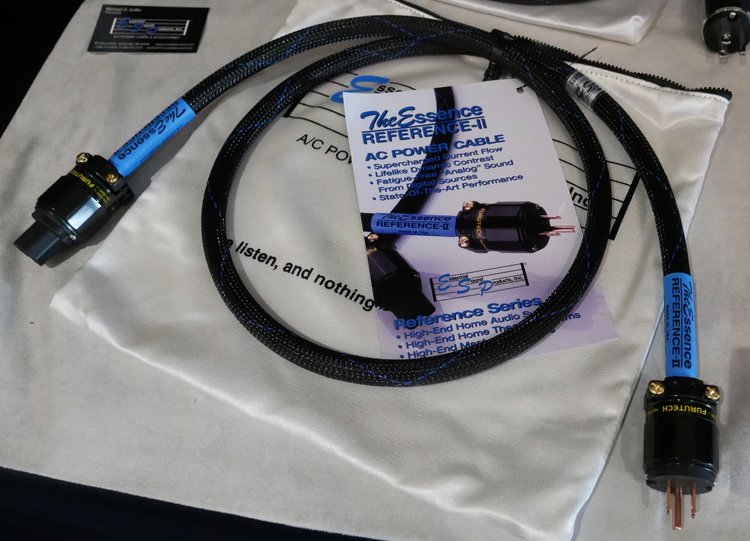
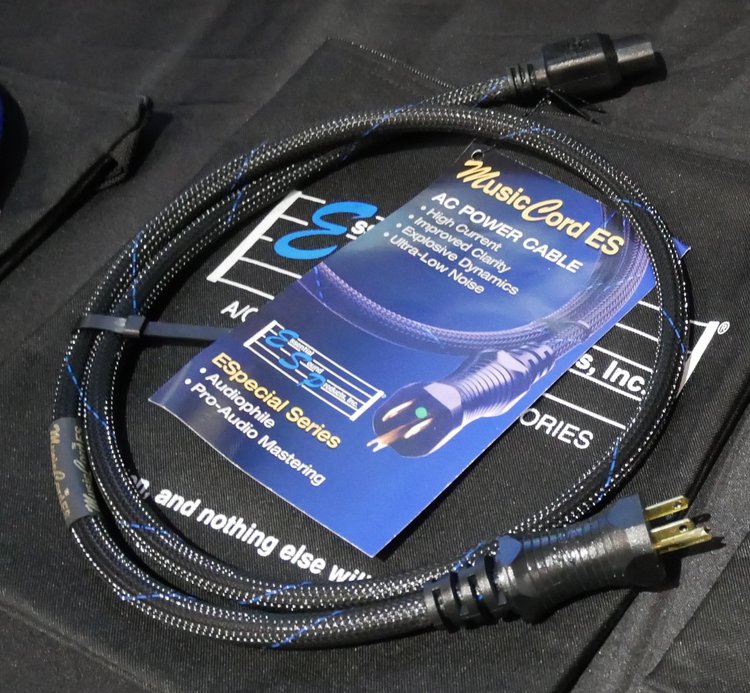
Photo 2 (left): The Essence Reference-II by Essential Sound Products is said to provide more power to peak amplifier excursions due to its superior conductivity. ($1,750 / 6ft for a limited time through the company’s website.) | Photo 3 (right): This Pro series power cord from Essential Sound Products offers both shielding and high conductivity along with UL/CSA certification. ($700 / 6ft for a limited time through the company’s website.)
______________________________________________________________________________________________________________________
As well as his “pro” models being UL / CSA-certified for use in professional recording studios, each of the company’s power cords is built to the same safety standards and is “hi-pot” tested to determine the effectiveness of its insulation before the item is packaged and shipped to the customer.
Other popular AC-power products and materials included in-wall wiring and audiophile-grade circuit-breaker panels and outlets. I gather there’s a lucrative market for such products since there seems to be more and more of them at consecutive AXPONA and other audio shows I’ve been to.
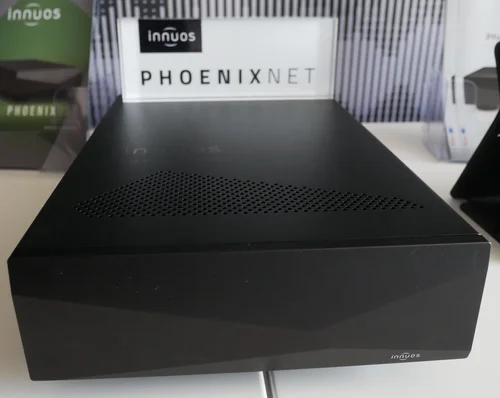
To my surprise, I learned that Innuos, the Portuguese manufacturer known for its high-quality, reasonably-priced network streamers with DACs, has never released a standalone DAC. That’s about to change, apparently. The Innuos representative on hand hinted that a DAC may be in the works, adding that if the company releases one, they want it to be of the highest sound quality possible. Another Innuos product being shown was the PhoenixNet network switch ($3,749) (photo 4), which re-clocks and delivers digital signals through a possible 3 ethernet ports at a level of stability that a standard network switch can’t match. This device is large for a network switch, and uses an internal “oven” to keep the frequency-generating crystal operating within very tight tolerances.
Notably, several rooms were using IsoAcoustics audio isolation devices. These include the speaker / component feet the company is mainly known for, but also adjustable stands known as Iso-Stands that are equipped with rubber suction cup interfaces that grip securely to the speakers. At a previous audio show, I bought a pair of the company’s Aperta 200 Iso-Stands ($250/pair), which do a great job at isolating a pair of standmount speakers from the tabletop they’re resting on. They also offer the ability to tilt the speakers up or down for optimal soundstaging and vertical dispersion. Several formats of the company’s products are available to suit all component sizes and weight categories. I like ‘em!
So much new Gear!
DALI was demoing its new KORE flagship loudspeaker ($110,000 / pair). Despite being in a less than ideal audition space next to the lobby—the speakers were flanked by large glass windows—The KOREs proved they could easily deliver the full range and dynamics of the recordings they were being stream-fed. Powering them was a 200Wpc NAD M33 BluOS DAC / streaming amplifier ($6000), which had no problem driving the 88db-sensitive KOREs to robust levels. It was also one of several class-D amplifiers I encountered at the show.
Luxman was showcasing its new PD-191A turntable ($12,495) and D-07X SACD player ($9,995). Both sources took turns feeding a pair of Magico S5 MKII speakers ($45,000) and a Magico QSUB-15 ($22,000). Other Luxman products in attendance included the company’s relatively new LMC-5 moving coil cartridge ($2,695) and 150Wpc M-10X power amplifier ($19,995), which operates in pure class-A up to 12 watts. Luxman’s PD-191A turntable features a belt-drive platter coupled to a brushless, ultra-quiet, DC motor. Its low-friction, knife-edge bearing tonearm design was said to offer some of the quietest LP reproduction possible (photo 5}.
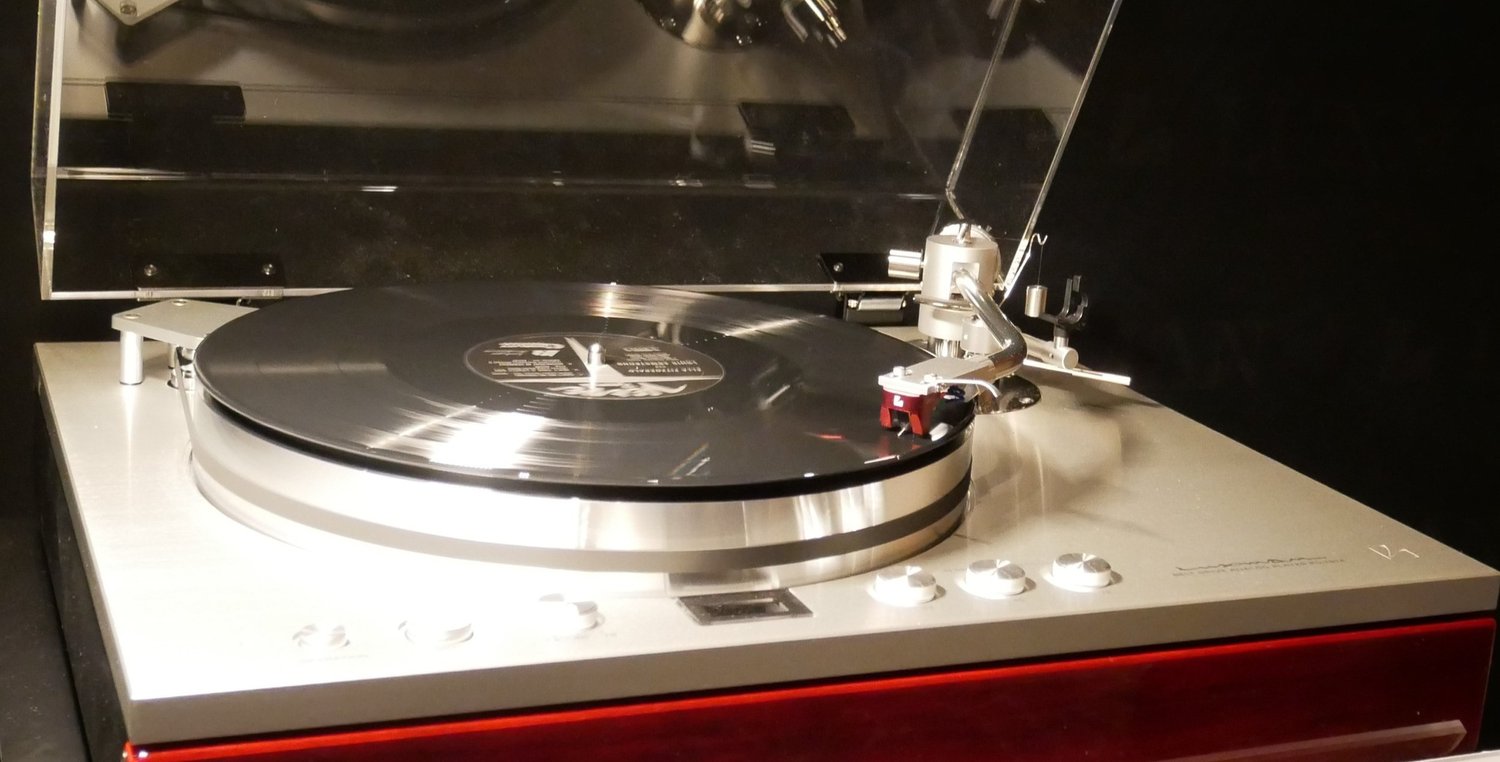
The battle for vinyl supremacy was fierce as nearly every room had a turntable setup competing to capture the hearts, minds, and wallets of show-goers, yet most were on static display when I dropped by, which makes me think that despite analogue’s seductive sound, it’s just easier in general to play digital at an audio show.

Just ask the company Haniwa, which was demonstrating its “Harry Pearson Memorial LP Concert”. To make a long story short (you can read the long story here), the late Harry Pearson wanted to use Haniwa’s technology to record vintage records in a digitized lossless format for future playback. To deliver what Haniwa calls ‘Real 3D’ audio, the technology uses DSP and other means to deliver a near perfect copy of the original signal all the way through to the speakers. The process of digitizing an LP was demonstrated, quite successfully, even though the turntable wasn’t used for playback. Instead, Haniwa used its digital source, a model HDSA03 Digital Phase Control System Amplifier (phew!), along with the company’s single driver speakers, to deliver superb sound in a 3D-like environment.
The company has some unique products. For instance, I was told that their MC cartridge uses only one turn of wire in the coil, to bring the internal impedance to 0.2 ohms, less than any other cartridge. The extremely low output voltage is used as a current source to provide what is said to be the most linear sound output that a vinyl source can produce. While I can’t corroborate that claim, I can say this: Haniwa’s system provided some of the best sound, and maybe the best soundstage, of the show. Photo 6 shows a picture of their top-of-the-line HCTR-CO Mark II cartridge ($10,000) installed on their turntable, called, economically, “The Player” ($15,000). Note in photo 7 how the tonearm is detached from the turntable structure. The cartridge’s unorthodox design requires that it be partnered with Haniwa’s HCVC current to voltage converter ($6,000), which can be used with a conventional phono preamp. Due to Hanawa’s unique DSP and phase control technologies, designed to preserve audio waveforms from input to output, Haniwa’s products are conceived and sold as complete systems. If you’re sold on their Real 3D technology, the company offers package configurations on their website, priced up to $60,000 for a complete system with speakers featuring their top-of-the-line products. I think their product line is quite good, and certainly worth a listen. I’m sure glad I listened.

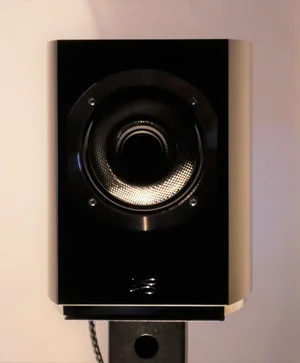
Yamaha demonstrated a similarly designed turntable / arm combination as the Haniwa’s, less the isolated pivot point—its $8,000 top-of-the-line GT5000. It employs a 9” straight arm, which, according to the rep that was there, requires no antiskating while its length introduces very little tracking errors. Also on display were the company’s new speakers, the Yamaha NS5000 ($15,000 including stands), a large bookshelf model whose cones are made of a novel synthetic material called Zylon. The speaker’s build quality seemed first rate, and included features such as new-technology damping mechanisms and resonance suppression chambers for its mid- and high-range drivers.
Another company with a new product was Cabasse, a French brand dating back to 1950, who was demoing its diminutive, but not small-sounding, active Rialto speaker ($4000) (photo 8). In fact, the sound emanating from these speakers was not only big, but seamless, spacious, clear, and solid—exquisite, regardless of size. Or, perhaps, because of it? Each speaker contains a concentric 13 cm (approx. 5”) midrange / tweeter driver powered by a 300W amplifier. At the rear of the speaker is a 17 cm (approx. 6.5”) HELD (High Excursion Low Distortion) bass driver powered by an internal 450W amplifier. DSP is used to finesse the distortions away while allowing bass to extend to a specified 30 Hz. A test with my favorite bass drum recording convinced me that the low bass reach is there, although without the authority wielded by my subwoofer at home.
Cabasse is known for its spherical, almost alien-looking designs, which the Rialto ($4000) isn’t. Offered in high gloss black or white finish and weighing 21 pounds each, the Rialto is made in the shape of a conventional speaker box, yet an entirely modern one. All that’s needed to make them play music is an internet connection with a streaming service, an AC power connection, and the downloadable Cabasse app. Input options abound: Ethernet, Wi-Fi, Bluetooth, Optical SPDIF, Analogue RCA, USB, and TV (HDMI). Located on the top of the main speaker is a touch-screen control with a colour LCD video screen. Supported streaming services include Spotify Connect, Tidal Connect, Apple AirPlay, Qobuz, and Deezer. These speakers, each of which requires an AC cord to operate, don’t use an interconnect between them to work. They offer room correction via a cloud-based algorithm and many other DSP features that are patented Cabasse innovations. The Rialto also has a built-in microphone and does automatic room calibration, which users can personalize according to preference. It takes 5 minutes and no equipment to initially set up. And they sounded great—comparable to some larger loudspeakers I heard at the show selling for thousands more. If this sort of product piques your interest, I think you’ll be, as I was, impressed by the Rialto’s performance.

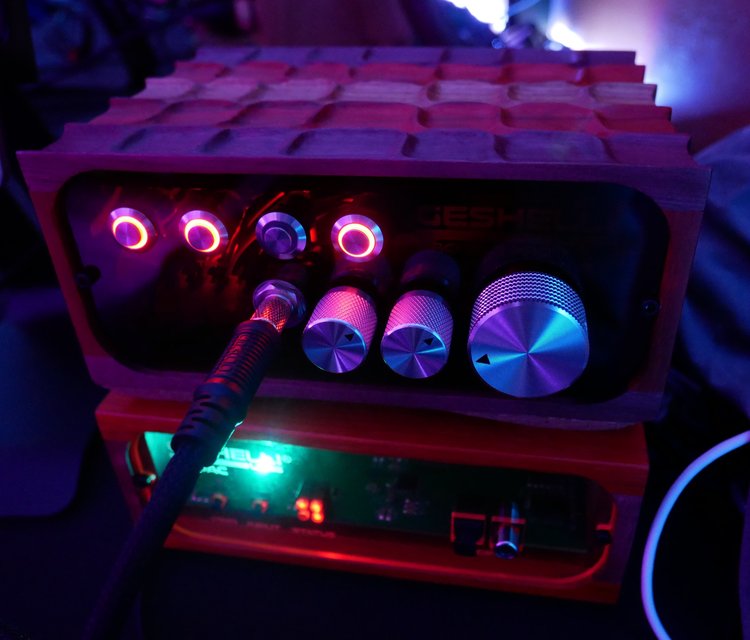
Another interesting product I encountered was the somewhat glitzy-looking HiFi Rose RS-130 streamer ($TBD) taking residence in the MoFi Distribution room. The very retro interface seen in photo 9 is one of several faces you can choose to be displayed on the unit. The HiFi Rose was being demoed with the Piega Master Line Source 2 Gen 2 loudspeakers ($120,000 / pair) from Switzerland . Having its launch at AXPONA, the Master Line Source 2 is the epitome of Swiss design with multiple ribbon drivers arrayed vertically in the cabinet’s top portion, with a separate vertical array for multiple bass drivers in the lower portion. Since they’re dipole speakers, sound also emanates from the back of them, as from an electrostatic membrane speaker, but these use a diffuser to allow closer placement to the wall, like a conventional speaker. The design allows one to experience the more spacious sound of an electrostat without the placement issues. From what I heard, it works very well. Other gear in the system included a 500Wpc BAT REX Dual Mono amplifier ($22,500), an Ideon Ion DAC ($20,000) matched to an Absolute Time clock ($12,000), and an Isotec V5 Aquarius power conditioner ($2,995), along with several cables by Cardas ($various), a Finite Elemente Pagode Signature rack, and, on static display when I was there, a Dr. Feickert Blackbird/EMT/Kuzma/My Sonic Lab Ultra Eminient EX analogue combo (total about $23,000) and MoFi Electronics MasterPhono ($5000).
At an audio show, one often comes into contact with smaller companies, “mom and pop” shops, if you will. Some are forgettable and some produce what seems like very fine gear. Among the latter is Florida-based Geshelli Labs, which operates out of a 3,000 square foot facility with 5 employees and worldwide sales. It manufactures DACs and headphone amplifier products, some of which were present for auditioning. I was most impressed with the artistic features of their DACs and amplifiers—these are not plain-Jane products, but artistic woodcarving works done by a master woodworker. Each piece is unique. Check out the Archel 3 pro headphone amp ($499) in its exotic-looking wood finish, sitting on the company’s JNOG2 DAC in its standard case (photo 10). The company’s DAC is customizable; the customer can choose which DAC chip to use—from AKM or Sabre—and from different op-amps, at varying levels of pricing. The DAC’s base price is $260. From there, add-ons will raise the price and can double it if a rare wood type is selected. See the company’s website at https://www.geshelli.com for details.
As to the sound quality of the Geshelli Labs products I heard, I had a very satisfying headphone listening session with a pair of Grado SR225 headphones. For anyone looking for an artistic statement from their portable system along with high-quality sound, Geshelli Labs can do it for you with flying colours. Talk to the Geshelli folks about an audition. They’re friendly and love to talk audio.










Leave a Reply